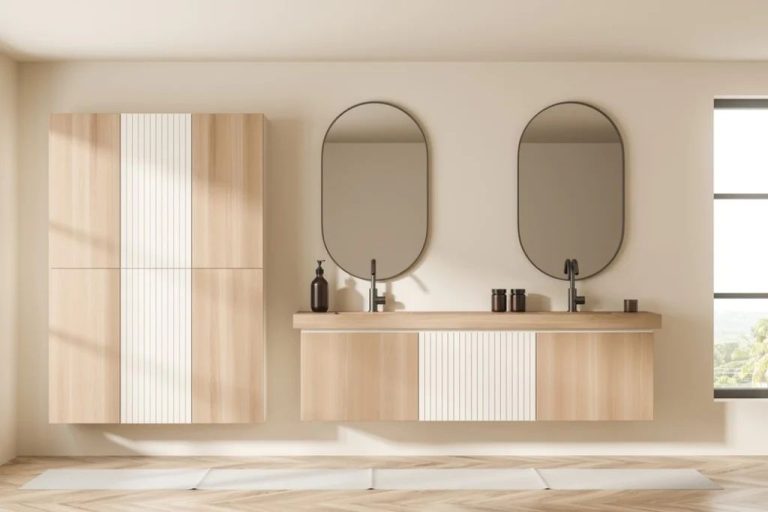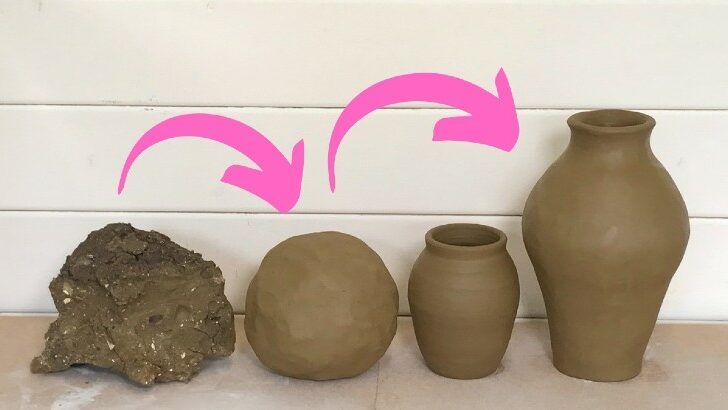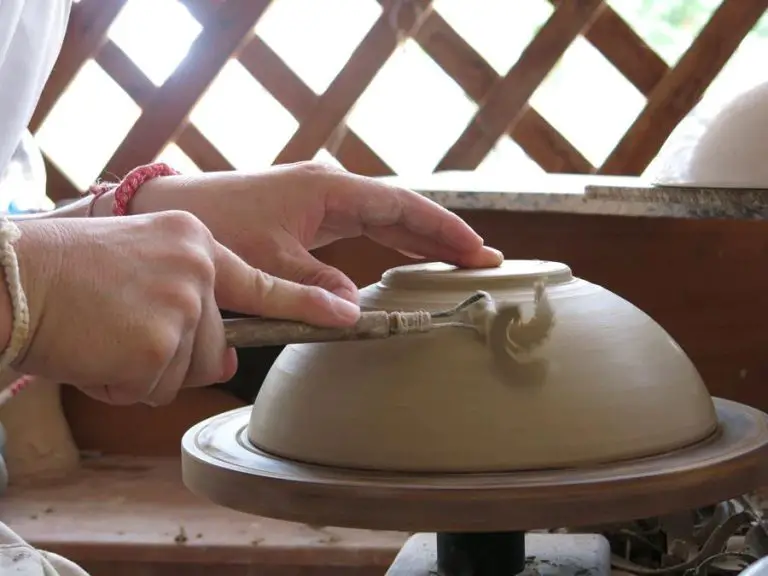What Are The Basic Clay Colors?
Clay colors refer to the different pigments and hues that clay comes in. Clay manufacturers produce clays in a wide variety of colors by adding pigments and dyes to the base clay material. While clays come in many shades, some of the most common and basic colors include red, brown, gray, yellow, green, blue, purple, orange, white, and black.
These basic clay colors provide artists and crafters with a versatile palette to work from. Blending, mixing, and layering the basic colors allows for the creation of infinite hues and tones. Understanding the characteristics and properties of the main clay color families is key for successfully working with polymer and modeling clays.
Red
Red clay gets its distinctive color from iron oxide. It has several unique properties that make it a versatile material for crafting and construction. According to the Red Clay Properties website, red clay is known for its plasticity and strength when fired at high temperatures (https://www.redclayproperties.com/).
Due to its high iron content, red clay can be used to produce terracotta items that become hardened and water resistant through firing. It is commonly used to make flower pots, bricks, roof tiles, and other decorative and structural materials. Red clay’s plasticity also makes it suitable for shaping pottery items on a wheel. When painted or glazed, the red clay provides a rich, vibrant base color.
In natural settings, the high iron content gives red clay an ability to absorb heat. It provides nutrients for plant growth. Red clay soils are known for being fertile, although they can become compacted. Overall, the distinctive properties of red clay make it a versatile material across many different industries and applications.
Brown
Brown clay tends to have iron oxide content, resulting in its reddish-brown color (Minta Farm Environmental Site Assessment 2011). Iron oxide provides brown clay with certain properties and uses. According to Minta Farm Environmental Site Assessment, brown clay exhibits “clay properties only obvious after adding water.” This refers to its plasticity and ability to be shaped when wet. However, brown clay can also be dried and fired into ceramics. The iron oxide provides brown clay with an earthy, natural color that works well for pottery, sculpture, and other clay crafts.
Brown clay is also popular for survival/bushcraft pouches, like the Helikon-Tex Bushcraft Dump Pouch in earth brown clay color (Helikon-Tex Bushcraft Dump Pouch). The natural hue helps the pouch blend into outdoor environments for hunting or camping. Brown clay can also resemble leather, making it suitable for outdoor gear and accessories.
Gray
Gray clay has a neutral grey color and is found in many regions around the world. Some key properties and uses of gray clay include:
Gray clay has moderate plasticity and moderate dry strength (Escario and Saez, 1986). It contains around 35% clay particles, 48% silt, and 17% sand (Source). Gray clay’s moderate plasticity makes it suitable for pottery and ceramics.
The neutral gray color allows gray clay to be easily dyed and colored. This makes it popular for creating decorative pottery, tiles, and sculptures. When fired at high temperatures, gray clay develops a stoneware-like quality.
In construction, gray clay can be used to make bricks and cement. Its moderate strength is sufficient for many building applications. The neutral color of gray bricks provides flexibility in design and appearance.
Overall, the versatility of gray clay’s properties allows it to be used in a wide range of pottery, ceramic, and construction applications.
Yellow
Yellow clay contains high amounts of iron oxide and has a smooth, buttery feel. Due to its rich iron content, yellow clay gives pottery a warm, reddish-brown hue when fired (Smith, 2019). Yellow clay is valued for its softness and workability. It’s commonly used for sculpture and other types of hand-building. The smooth texture and high plasticity allows artists to easily shape intricate details. Some key properties and uses of yellow clay include:
- High plasticity – Easy to wedge and shape
- Soft texture – Good for detail work and carving
- Warm reddish-brown color when fired
- Frequently used for sculpture, hand-building, and pottery
- Valued by ceramic artists for its smooth, buttery feel
Yellow clay can be found in many parts of the world, including deposits in the US states of Tennessee, Utah, and New Jersey (Moore, 2022). When mixed with other natural clay colors, it creates a diverse palette for ceramic artists and potters.
Sources:
Smith, A. (2019). A Potter’s Guide to Clay. Acme Publishing.
Moore, J. (2022). Yellow Clay: Properties and Origins. Ceramics Monthly.
Green
Some of the key properties and benefits of green clay include:
Green clay has a fine, powdery texture and is grayish-green in color. It has no noticeable odor (French Green Clay Product Literature).
It is very absorbent and can draw out impurities from the skin. This makes it great for cleansing and gently exfoliating the skin (Green Clay: What It’s Good For and How To Use It; Buy Bulk French Green Clay | FNWL).
It helps balance oily skin and refine pores. It can also help improve skin clarity and complexion.
Green clay is soothing and calming for irritated or inflamed skin. It may help with conditions like acne, eczema, and psoriasis.
When used on the skin, it provides minerals like iron, calcium, magnesium, potassium, and silica. This makes it nourishing for the skin.
It can also be used in hair masks to help remove impurities and buildup, remove excess oils, and improve hair shine.
Blue
Blue clay gets its distinctive color from the presence of ferrous and ferric oxides. According to a study on the physical properties of Boston Blue clay (https://core.ac.uk/download/pdf/19894154.pdf), this type of clay has high plasticity and high water content. The study found that the undrained shear strength of Boston Blue clay averages around 40-60 kPa but can reach up to 120 kPa at deeper depths. The shear wave velocity is around 100 m/s on average. Blue clay also has low permeability with hydraulic conductivity values ranging from 10-10 to 10-8 cm/s.
Blue clay has many uses in construction and manufacturing. Its high plasticity makes it well-suited for making bricks, tiles, and ceramics. Blue clay can also be used in cat litter products. In geology, the presence of blue clay is often indicative of a marine depositional environment. Blue clays found in places like the Gulf of Mexico were deposited in a low energy marine setting over geologic timescales.
Purple
Purple clay, also known as zi sha or zisha clay, is a type of clay found in the Jiangsu province of China. It gets its distinctive purple color from iron oxide. Purple clay is known for its fine particle size and plasticity, which makes it excellent for creating delicate porcelain wares like teapots and teacups.
Some key properties and uses of purple clay include:
- High iron content – the iron oxide gives the clay its purple color and allows it to fire to a range of shades from light lavender to deep purple.
- Good thermal stability – purple clay can withstand rapid temperature changes, making it suitable for teaware.
- Absorbent – the porous nature of fired purple clay makes it effective at absorbing and dispersing heat, which is ideal for brewing tea.
- Naturally non-stick – the smooth surface of purple clay prevents buildup and sticking.
- Adds subtle flavor – purple clay is thought to impart a subtle sweetness and minerality to tea.
- Artistic tradition – purple clay has a long history of being used to create elegant teaware in China’s Yixing region.
Purple clay’s unique properties make it a prized material for creating Yixing teapots, tiny teacups, and other fine ceramic pieces. The clay develops a natural patina over time, making each vessel distinctive.
Orange
Orange clay gets its color from iron oxide content, which causes the rust color. This type of clay is often used for making earthenware pottery. Some key properties and uses of orange clay include:
According to The Spruce Crafts, orange clay is a typical color for moist earthenware clay. Earthenware clay is known for being porous and coarser than other clays.
Orange earthenware clay fires to a reddish-orange hue. It can be used to make ceramic items like flower pots, dishes, and vases. The fired clay is durable but also brittle if thin.
Orange clay has medium plasticity which makes it easy to work with for handbuilding and throwing on the pottery wheel. It also has good absorption properties.
The iron oxide content gives orange clay natural earthy colors perfect for rustic pottery styles. When glazed, the colors become richer and deeper.
Black
French black clay is a cosmetic clay known for its dark charcoal black hue and soft texture. When moistened, the clay develops a dark black color and smooth texture ideal for skin care applications (FNWL).
Some key properties of black clay include (Praan Naturals):
- Very fine particle size
- Soft, smooth texture
- Dark black color when wet
- Faint earthy aroma
French black clay is commonly used in skincare and cosmetic applications like face masks, soaps, and mud masques. The clay is believed to draw out impurities, cleanse pores, and impart minerals to the skin.




